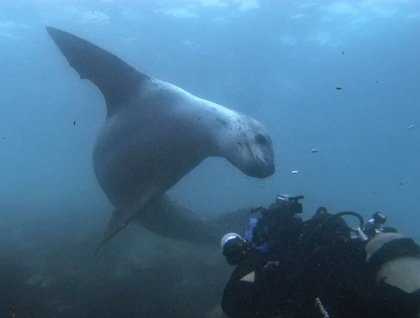In the gurgling surge of water running over rock, a dark shape floats at the edge of visibility. My hands are numb. The sound of bubbles fills my ears. Or is it my heartbeat? A sinewy mass of sleek underwater predator spins about my head, curiosity in her eyes. We locked onto her movements and every intense glare, looking for the slightest sign of malice but it never came. While other leopard seals dispatched penguins before our guests’ eyes, this one let us peacefully into her cold world. Not once were we made to feel unwelcome, so we stayed, marveling at her ease amidst our labored underwater existence. Eventually the silvery figure faded into the blue haze leaving us with a lifetime of memories compacted into just a few dilated minutes. Was it just a dream?
The bright light coming in through the port light was an unusual sight and one worth sitting up and investigating. Morning eyes squinted in the early morning light, water racing by reflecting the sun. It was brilliant. Elephant Island could not have been more white against the deep blue ocean and azure sky. The South Shetland Islands are rarely this pleasant as Sir Shackleton and his men can attest to. This morning we tucked into Point Wilde and cast our eyes upon the very spot where 21 of Shackleton’s men hunkered down, under two overturned boats, optimistically waiting for the safe passage of The Boss to South Georgia and their eventual rescue.
A ubiquitous north swell filled the bay as our boats bobbed up and down in the crisscross seas. Spires of rock so steep not even wind-blasted snow could cling to their sides towered overhead. Chinstrap penguins stood patiently upon their future nests, painting the snow with their guano, hoping for its timely demise.
We have seen the replica James P Caird, walked towards the now-off-limits Stromness Station, and seen what’s left of Point Wilde. Tomorrow, we’ll see the real Weddell Sea, the start of Shackleton’s epic story and the most overwhelming part of the Antarctic Peninsula.







